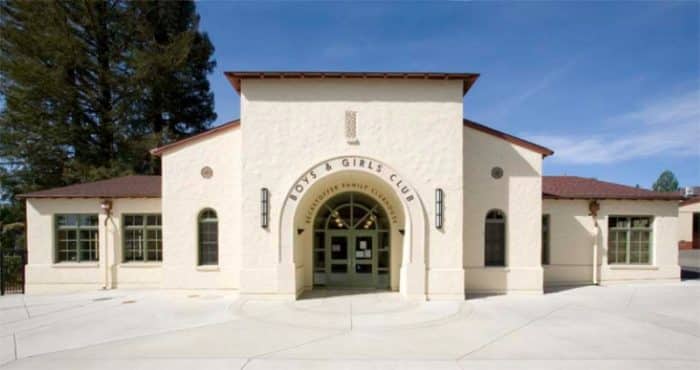Case study: Accelerating microgrid projects with the right controller

The Boys & Girls Club of St. Helena and Calistoga in Napa County, California, needed to bolster its energy resiliency to better serve the needs of the community. The organization sought to install a solar + storage microgrid, but had difficulty finding the right project partner to deliver a solution in a timely manner. Vital Energy and Ageto ultimately came through and delivered the project within four months.
The latest episode of Dispatches from the Energy Transition, a webinar series from Mayfield Renewables and clean energy agency Outfit, focuses on accelerating microgrid development and featured speakers Akshay Pagare, project developer at Vital Energy, and Laura Williams, application and analytics engineer at Ageto Energy, both of whom were involved with the Boys & Girls Club project.
Each episode of Dispatches from the Energy Transition will zoom in on the real-world application of emerging technologies and the projects they impact — in a level of detail only Mayfield can provide. The next webinar, The Impact of Field Intelligence, will be at 3 p.m. ET on Aug. 20 . Register here.
Microgrid project goals
Community centers like the Boys & Girls Club are a common use case for microgrids in today’s market, according to webinar cohost Robert Cross, principal of Outfit. Ensuring energy resilience is important to serve the needs of the people who visit these facilities.
“The Boys & Girls Club in Calistoga hosts a lot of daycare type of services,” Pagare adds. “On any given day, there there’s around 100 kids running around. It’s a very family-centric community center too. Lots of families come there for events, graduations, and all sorts of different programs that they run, such as basketball games.”
The facility also has served as a place to seek shelter and power various devices during California’s wildfires and storms, Pagare says. Additionally, utilities in Northern California regularly conduct planned Public Safety Power Shutoffs (PSPS), which was another driver for the project.
During the COVID-19 pandemic, the Boys & Girls Club hosted the World Central Kitchen and provided more than 40,000 free meals to the community, adds webinar cohost Lucas Miller, a senior engineering consultant at Mayfield Renewables.
Another developer had previously contracted with the Boys & Girls Club to build a microgrid, but failed to deliver. Pagare says when Vital Energy and Ageto stepped in, they worked to understand the needs of the Club and the community.
There were three main goals of the Boys & Girls Club of St. Helena and Calistoga microgrid project:
- Improve resilience
- Save on energy costs
- Add EV charging capabilities
On the resiliency side, Pagare says the microgrid project was designed to deliver 30 hours of autonomy during a PSPS or other outage event, meaning the system would be able to “energize the facility for 30 hours continuously from when the grid goes down and to when the grid comes back on, if no other inputs are provided,” such as sunlight via the solar PV component of the project or another power generator.
Energy cost savings were achieved through rate optimization and the Self-Generation Incentive Program (SGIP), a program in California that provides a rebate for DG systems installed on the customer’s side of the utility meter. Ageto specializes in controller optimization and was able to provide data on time of use (TOU) metrics to realize cost savings and to balance energy usage between the different components of the microgrid system.
“A microgrid controller is essentially the brain of your microgrid system,” Williams says. “What we do with our controls is we’re essentially communicating with and coordinating and optimizing all of these disparate distributed energy resources.”
Williams explains that TOU “is the primary driver for economic return on investment,” and the microgrid controllers manage the demand charge to “make sure that the draw from the utility isn’t peaking a lot because of those EV Chargers.”
The Boys & Girls Club of St. Helena and Calistoga wanted to add three EV chargers to its facility to benefit the public, Pagare says, but controlling costs was a major key for the organization.
“Part of making sure that the costs didn’t go through the roof for them was this microgrid, which is able to reduce the demand charge and shift the energy from on-peak times to off-peak times so that their public offering for EV charging is not a huge financial burden,” Pagare says. “Just as a metric, in the beginning before they had EV chargers put in, the Club had used around 5,000 kWh in the month of June, and they had a bill for about $2,000. This last June, they used 15,000 kWh hours, which is almost triple due to EV charging, and their import was the same, about 5,000 kWh, but their bill was like $800. The added load here is really spread out by the microgrid. Through energy shifting and the rate optimization, it’s able to provide the public EV charging at an affordable cost.”
The Boys & Girls Club of St. Helena and Calistoga microgrid project serves as an example for other developers to accelerate microgrid project development to deliver energy resilience and cost savings for end users.
Be sure to sign up for the next episode of the Dispatches from the Energy Transition webinar, The Impact of Field Intelligence, which will be at 3 p.m. ET on Aug. 20. Register here.





Comments are closed here.